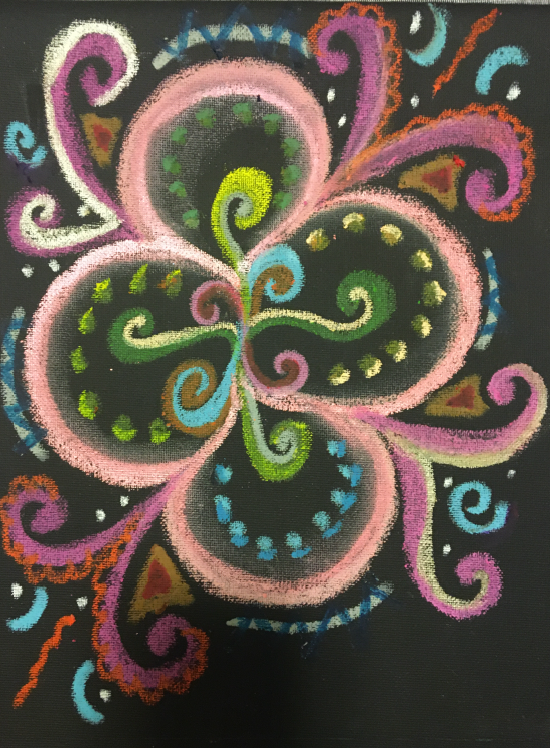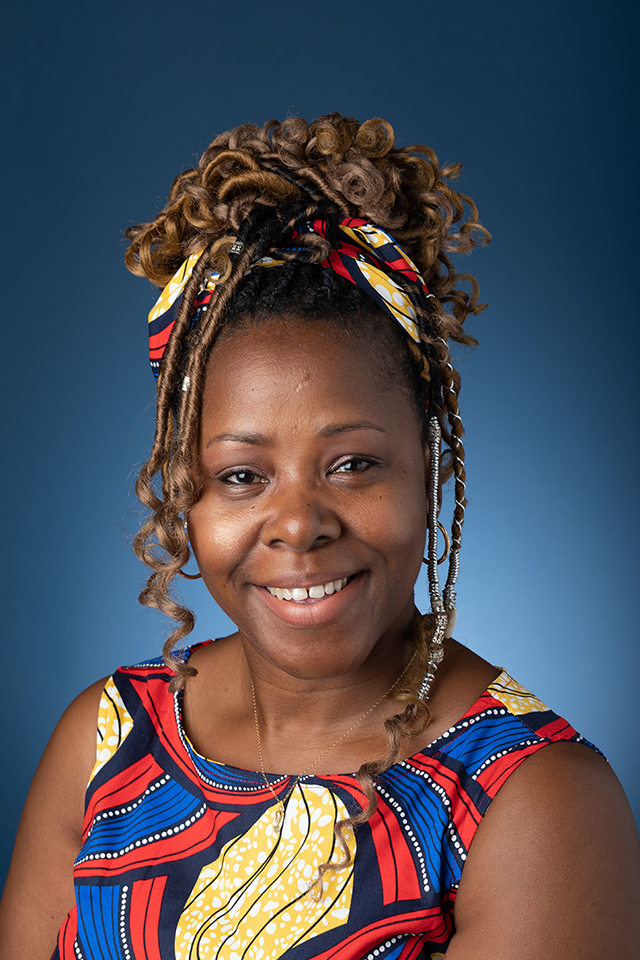July 30, 2020 | Louvenia Jackson, Ph.D., LMFT, ATR-BC
Why do we need racial diversity, equity and inclusion? Let’s think about a muslin canvas frame. Many painting frames are created for white canvases. These muslin canvases are primed with white gesso to prepare them for the colors that will impact their base coats. When white paint hits a white canvas it is absorbed, blending with its background. It is reaffirmed. When color is added to a white canvas, it becomes a focal point while still being bound by the white canvas and frame. With little color, the frame and background dominates, dictating where the eye or field of view becomes relevant. With lots of color disbursed throughout the canvas, many perspectives are shown leading the viewer to find what they are drawn to, finding their relation to the canvas—again within the confines of the frame. What if the creation existed on a colored background, with many colors depicted on it? The narrative of the art changes, allowing for different perspective to arise with complexity, intrigue, and without colonization.

“The blossoming of decolonization” by Louvenia Jackson
We must not just add color to a white base; we need to change the base. One perspective cannot be the base for all others to exist or be cultivated by. Within the art therapy field and association, from the beginning, I realized I was that one black dot on a white canvas. Existing in this way becomes isolating, devaluing and discouraging.
We help our practitioners and membership develop an impact against anti-racism to support the work that we do with our clients. At the same time, we also have to support the anti-racism practices against white supremacy within our field and association. To reach a place where we (art therapists and art therapy) are racially diverse, we have to make a deliberate effort to build a canvas with a colored background where all colors exist and are used to make a beautiful creation.
In creating this new creation, here are a few introspective questions we can ask ourselves as individuals:
1) As an educator: Are you making the effort to reach potential students of color? Are you supporting the students of color in a way that offers safety and security; makes them feel a sense of belonging so that self-actualization can be reached? Are you intentionally discussing and educating about the influence of social injustices, oppression and inequities in all courses, making room for meaningful dialogue that shares all perspective and experiences? Is financial support considered along with other resources being shared? Are you hiring faculty of color, which enables a broader dialogue within the educational delivery and pedagogy? Are materials such as literature from people of color being introduced and used throughout course work and learning?
2) As a practitioner: Are you helping to support or mentor other practitioners of color? Are you sharing employment opportunities? Are you advocating at your sites or facilities to hire people of color? Are you encouraging diversity training for clinicians, administration, and staff? Are you attending these trainings and encouraging others including interns to participate? Are you making efforts to collaborate and create relationships with other clinicians of color?
3) As a member: Are you inviting diverse people to join the association or to attend the annual conference? Are you volunteering as a mentor or participating in answering questions in the MyAATA member community forum? Are you joining committees and inviting people of color (POC) to be a part of those committees? Are you promoting POC within these committees into leadership roles? Are you creating vehicles within the association for members of color to feel validated and welcomed? Are you offering suggestions and/or developing ways to enhance racial diversity within the association? Are you holding the association accountable while also being an agent of change?
Anti-racism, against white supremacy, works in tangent with cultural humility. Its principles, according to Dr. Melanie Tervalon and Leanna Lewis, are:
- A lifelong process of critical self-reflection and self-critique.
- Readdressing the power imbalance in the patient-provider dynamic.
- Developing mutually beneficial partnerships with communities on behalf of and defined populations.
- Advocating for and maintaining institutional accountability.
I use the following definition in my book, Cultural Humility in Art Therapy: The Balance of Creativity, Introspection and Advocacy: “The principles of cultural humility, which addresses the power differential and encourages the individual and institution to examine privilege within social constructs, designs a prospective that could shift the etic practice of therapy. Cultural humility emphasizes self-reflection and knowing one’s self in order to appropriately interact with the client while being mindful of your bias, assumptions, and beliefs.”
In order to activate and intentionally shift the often deliberate oppression of black and/or indigenous people of color that keeps them from freedom, liberty and power, one has to do the work within themselves to understand why this shift is necessary and their role within it. What we are seeing are people who are joining movements and coopting them by shifting it to what they (from their world perspective) need without the consideration of those who have been harmed and burdened by the acts of injustice. These are the ones who are not listening, these are the ones who have not considered how to be culturally humble and done the self-examining work in order to be impactful in the movement against anti-racism.
If you are doing it because someone told you it was right, out of guilt, or because it will remove you from being identified as a racist—again the action is self-serving. Instead your actions should be in the service of others that need humble, driven, knowledgeable and considerate partners who truly understand and acknowledge the plight. Putting aside fears of losing power enables the sharing and, at times, shifting of power to those who have been disenfranchised. Let’s invest in the work to self-critique our intentions and create a beautiful canvas, constructed for all, depicting color diversity, perspective and beauty.
Jackson, L (2020). Cultural Humility in Art Therapy: The Balance of Creativity, Introspection and Advocacy. Philadelphia, PA: Jessica Kingsley Publications
Tervalon, M., & Lewis, L. (2018) Cultural humility: working in partnership with individuals, families and communities. Training the Trainer Workshop, Oakland, CA.
Louvenia Jackson, Ph.D., LMFT, ATR-BC
 Dr. Jackson is an assistant professor at Loyola Marymount University Graduate Department of Marital Family Therapy with Specialized Training in Art Therapy. She received her MFT and Ph.D. from Notre Dame de Namur University Art Therapy Psychology Department. Her work on cultural humility in art therapy education has earned her the May 2016 Outstanding Service Award from NDNU’s Art Therapy Psychology Department Ph.D. Program and the American Art Therapy Association’s 2016 Pearlie Roberson Scholarship. Dr. Jackson is featured in the research book Emerging Perspectives in Art Therapy (Carolan and Backos, 2018), in the co-edited chapter “Wisdom Through Diversity in Art Therapy,” focusing on cultural humility, and competence in art therapy. She has also co-authored a publication with LMU faculty Anthony Bodlovic, Bodlovic, A. & Jackson, L. (2018). “A Cultural Humility Approach to Art Therapy Multicultural Pedagogy: Barriers to Compassion”. The International Journal of Diversity in Education, 19(1):1-9.
Dr. Jackson is an assistant professor at Loyola Marymount University Graduate Department of Marital Family Therapy with Specialized Training in Art Therapy. She received her MFT and Ph.D. from Notre Dame de Namur University Art Therapy Psychology Department. Her work on cultural humility in art therapy education has earned her the May 2016 Outstanding Service Award from NDNU’s Art Therapy Psychology Department Ph.D. Program and the American Art Therapy Association’s 2016 Pearlie Roberson Scholarship. Dr. Jackson is featured in the research book Emerging Perspectives in Art Therapy (Carolan and Backos, 2018), in the co-edited chapter “Wisdom Through Diversity in Art Therapy,” focusing on cultural humility, and competence in art therapy. She has also co-authored a publication with LMU faculty Anthony Bodlovic, Bodlovic, A. & Jackson, L. (2018). “A Cultural Humility Approach to Art Therapy Multicultural Pedagogy: Barriers to Compassion”. The International Journal of Diversity in Education, 19(1):1-9.
Currently, Dr. Jackson released her first authored book, Jackson, L (2020). Cultural Humility in Art Therapy: The Balance of Creativity, Introspection and Advocacy. Philadelphia, PA: Jessica Kingsley Publications. Dr. Jackson serves on the American Art Therapy Association’s Board of Directors and currently focuses on community-based art therapy practice and research in addressing social justice considerations in art therapy education, therapy practice and research in addressing social justice considerations in art therapy education.
